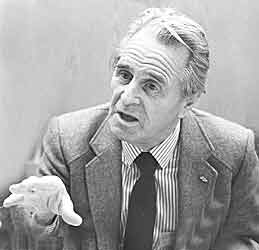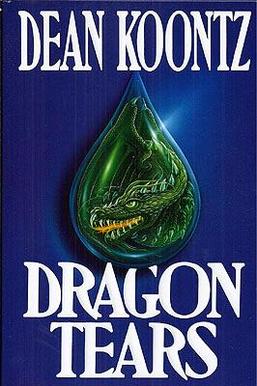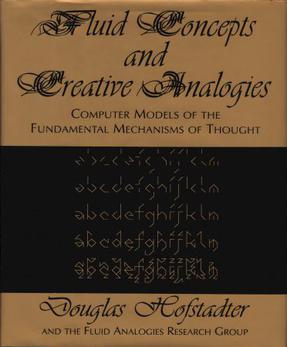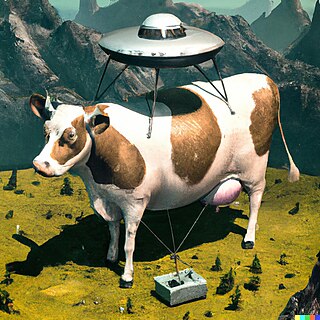
Jacqueline Susann was an American novelist and actress. Her novel Valley of the Dolls (1966) is one of the best-selling books in publishing history. With her two subsequent works, The Love Machine (1969) and Once Is Not Enough (1973), Susann became the first author to have three novels top The New York Times Best Seller list consecutively.
Racter is an artificial intelligence program that generates English language prose at random. It was published by Mindscape for IBM PC compatibles in 1984, then later for the Apple II, Macintosh, and Amiga. An expanded version of the software, not the one released through Mindscape, was used to generate the text for the published book The Policeman's Beard Is Half Constructed.

Valley of the Dolls is the first novel by American writer Jacqueline Susann. Published in 1966, the book was the biggest-selling novel of its year. By 2016 it had sold more than 31 million copies, making it one of the all-time best-selling fictional works in publishing history.

Yargo is a romantic science fiction novel by Jacqueline Susann. It was written during the 1950s, but not published until 1979, four years after Susann's death.

Harold Edward James Aldridge was an Australian-British writer and journalist. His World War II despatches were published worldwide and he was the author of over 30 books, both fiction and non-fiction works, including war and adventure novels and books for children.

Dragon Tears is a 1993 paranormal/horror novel by the best selling author Dean Koontz.

Susann Cokal is an American author. She is best known for having written the novels The Kingdom of Little Wounds, Mirabilis, Mermaid Moon, and Breath and Bones, along with short stories, literary and pop-culture criticism, and book reviews. The Kingdom of Little Wounds won a Printz silver medal from the American Library Association in 2014.

The Love Machine is the second novel by Jacqueline Susann, the follow-up to her enormously successful Valley of the Dolls (1966). Published by Simon & Schuster in 1969, the book was a New York Times number-one best seller.

Lyudmila Stefanovna Petrushevskaya is a Russian writer, novelist and playwright. She began her career writing short stories and plays, which were often censored by the Soviet government, and following perestroika, published a number of well-respected works of prose.

Fluid Concepts and Creative Analogies: Computer Models of the Fundamental Mechanisms of Thought is a 1995 book by Douglas Hofstadter and other members of the Fluid Analogies Research Group exploring the mechanisms of intelligence through computer modeling. It contends that the notions of analogy and fluidity are fundamental to explain how the human mind solves problems and to create computer programs that show intelligent behavior. It analyzes several computer programs that members of the group have created over the years to solve problems that require intelligence.

Once Is Not Enough is the third novel by Jacqueline Susann, published in 1973 following her huge bestsellers Valley of the Dolls (1966) and The Love Machine (1969). With Once Is Not Enough, Susann became the first writer in publishing history to have three consecutive #1 novels on the New York Times Best Seller list.

Computational creativity is a multidisciplinary endeavour that is located at the intersection of the fields of artificial intelligence, cognitive psychology, philosophy, and the arts.
Pop music automation is a field of study among musicians and computer scientists with a goal of producing successful pop music algorithmically. It is often based on the premise that pop music is especially formulaic, unchanging, and easy to compose. The idea of automating pop music composition is related to many ideas in algorithmic music, Artificial Intelligence (AI) and computational creativity.
Music and artificial intelligence (AI) is the development of music software programs which use AI to generate music. As with applications in other fields, AI in music also simulates mental tasks. A prominent feature is the capability of an AI algorithm to learn based on past data, such as in computer accompaniment technology, wherein the AI is capable of listening to a human performer and performing accompaniment. Artificial intelligence also drives interactive composition technology, wherein a computer composes music in response to a live performance. There are other AI applications in music that cover not only music composition, production, and performance but also how music is marketed and consumed. Several music player programs have also been developed to use voice recognition and natural language processing technology for music voice control. Current research includes the application of AI in music composition, performance, theory and digital sound processing.

Dolores is the final novel of American writer Jacqueline Susann. Published by William Morrow in 1976, it is a roman à clef based on the life of Jacqueline Kennedy. It first appeared in the February 1974 issue of the Ladies' Home Journal, seven months before Susann's death from cancer.
Irving Mansfield was an American producer, publicist and writer. He is best remembered as the husband of novelist Jacqueline Susann and for his promotion of Susann's popular books.

Artificial intelligence art is visual artwork created through the use of an artificial intelligence (AI) program.

The Sorceress and the Cygnet is a fantasy novel by Patricia A. McKillip. It was first published in hardcover by Ace Books in May 1991, with a paperback edition following from the same publisher in January 1992. The first British edition was published in hardcover and trade paperback by Pan Books in June 1991, with a standard paperback edition following from the same publisher in May 1992. It was subsequently combined with its sequel The Cygnet and the Firebird into the omnibus collection Cygnet, issued in trade paperback by Ace Books in March 2007.

Dolls! Dolls! Dolls!: Deep Inside Valley of the Dolls, the Most Beloved Bad Book and Movie of All Time is a non-fiction book by Stephen Rebello. It details the creation of the 1966 novel of the same name by first-time novelist Jacqueline Susann and documents every aspect of the creation of the 1967 motion picture adaptation Valley of the Dolls.
In the 2020s, the rapid advancement of deep learning-based generative artificial intelligence models are raising questions about whether copyright infringement occurs when the generative AI is trained or used. This includes text-to-image models such as Stable Diffusion and large language models such as ChatGPT. As of 2023, there are several pending U.S. lawsuits challenging the use of copyrighted data to train AI models, with defendants arguing that this falls under fair use.















